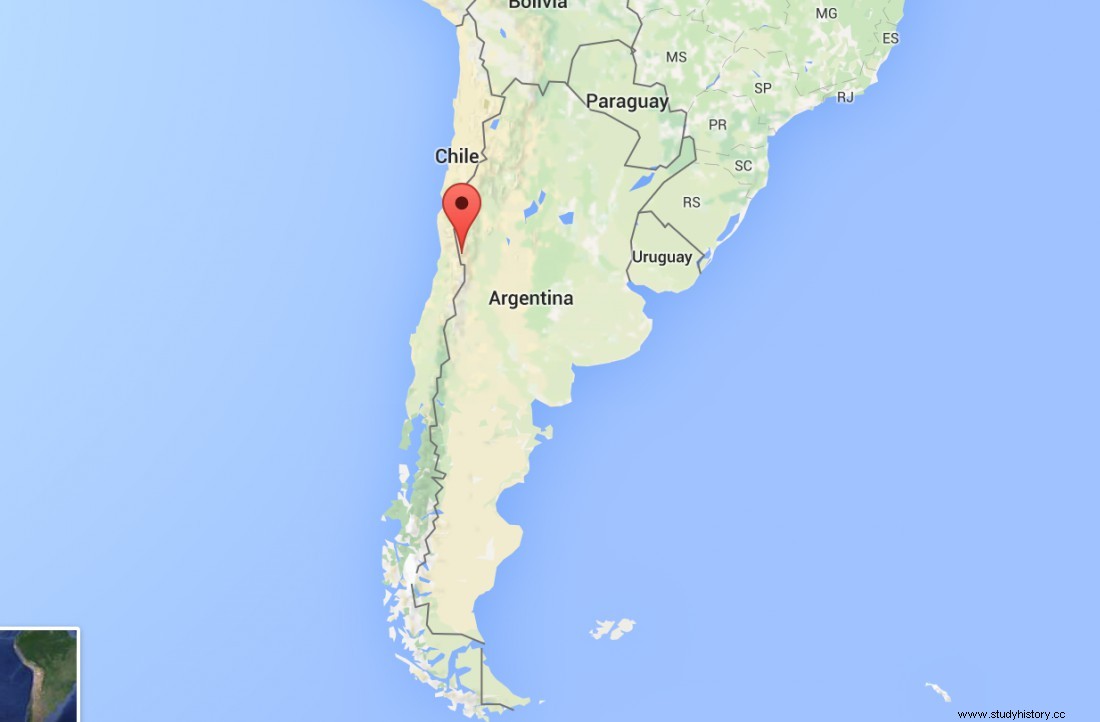 The Cerro Aconcagua mummy, found in the Andes in 1985. Top left, lung fragments from which the genetic analysis was made.
The Cerro Aconcagua mummy, found in the Andes in 1985. Top left, lung fragments from which the genetic analysis was made. To strengthen their power, and above all to benefit from the favors of the gods, the Inca emperors (15th-16th century) had children sacrificed, often on the highest peaks of the Andes. Geneticists have thus analyzed the mummified remains of a 7-year-old boy immolated 500 years ago and discovered in 1985 at the top of Cerro Aconcagua, the highest mountain in America (6962 meters), in the province of Mendoza, in the border of Argentina and Chile. DNA sequencing of this mummy kept at the National University of Cuyo, in the city of Mendoza, could be carried out from a tiny sample of lungs (350 mg). According to the authors of the study, this would be the first comprehensive genetic analysis of mitochondrial DNA (maternal lineage, as opposed to nuclear DNA which comes from both parents) of a Native American mummy. The results published in the journal Scientific report reveal its belonging to a Paleo-Indian sub-group, the oldest inhabitants of the continent, disappeared today after having been present in Peru from 14,300 years ago. This same genetic profile was also found on a Wari mummy (1100 AD), a people before the Incas. This haplotype*, baptized C1bi, is still present in very few people. Only three of them have been identified in Bolivia (among Aymaras) and Peru. This could partly be explained by insufficient sampling of modern populations.

Location of Aconcagua, the highest peak in America (6962 meters) where a sacrificed Inca child mummy was found. ©Google Maps
The province of Mendoza, where this child mummy was unearthed at an altitude of 5300m, corresponds to the southernmost expansion of the Incas, in the Andes cordillera. The mother or the ancestors of the little victim would in fact come from a region located more than a thousand kilometers away. "We know that the Incas performed pilgrimages of more than 1000 km for these ritual sacrifices" , said Alberto Gomez-Carballa, from the University of Santiago de Compostela (Spain), the geneticist behind the analyzes carried out in association with an Argentine team. The little boy may have traveled this distance after being chosen to be sacrificed to the gods in a ritual called Capacocha (read box).
Children were indeed selected throughout the Inca territory according to their social group, their beauty and their physical perfection, as evidenced by the discoveries of fifteen other small bodies in recent decades. Starting with the Ice Maiden , also known as Juanita, the child from Nevada Ampato, unearthed near Arequipa (Chile). These mummies were always accompanied by offerings attributed with magical powers:finely woven fabrics (cumbi) , but also precious metal objects. The Aconcagua boy was thus found wrapped in several layers of feather-adorned textiles in addition to six statuettes. According to Science magazine , the entire nuclear genome of this child, as well as all the microbes preserved in his intestine should also be sequenced. The researchers intend to carry out the first analysis of the microbiome of a mummy and that of the infectious germs that it could have preserved. Further results should therefore follow.
CAPACOCHA
The sacrificed children of the mountains
Among the Incas, the mountains are divine abodes (huacas) . And to ward off their fear of earthquakes, volcanic eruptions or the disappearance of the sun, along the 3000 km that formed their empire, the Incas made offerings of children called capacocha , or royal sacrifices. They considered that only pure and perfect beings could touch the gods. In the writings of Bernabe Cobo, a Spanish Jesuit of the 16-17th century, the immolated boys were less than 10 years old, while the age of the girls could reach 15 to 16 years old. These children were often drugged as evidenced by the mummy of Aconcagua whose intestines still concealed roucou, u n red dye which would also act as a hallucinogen. The young boy also seems to have died violently, his clothes having been found soiled with vomit. He was allegedly strangled and then knocked unconscious.
A *haplotype is a set of genes located side by side on a chromosome. They are usually passed on together to the next generation.
READ ALSO.
The Incas practiced surgery without a scalpel. In the 16th century, the practice of ritual cannibalism and human sacrifice provided the Incas with unparalleled surgical knowledge.
Children of the clouds. In 2013, 35 new sarcophagi of the Chachapoyas - a civilization conquered by the Incas - were discovered in the Peruvian Amazon.
The Kon-Tiki Odyssey. 7000 kilometers on the Pacific in a raft for an experimental navigation intended to prove that the feat was within reach of the Incas.
